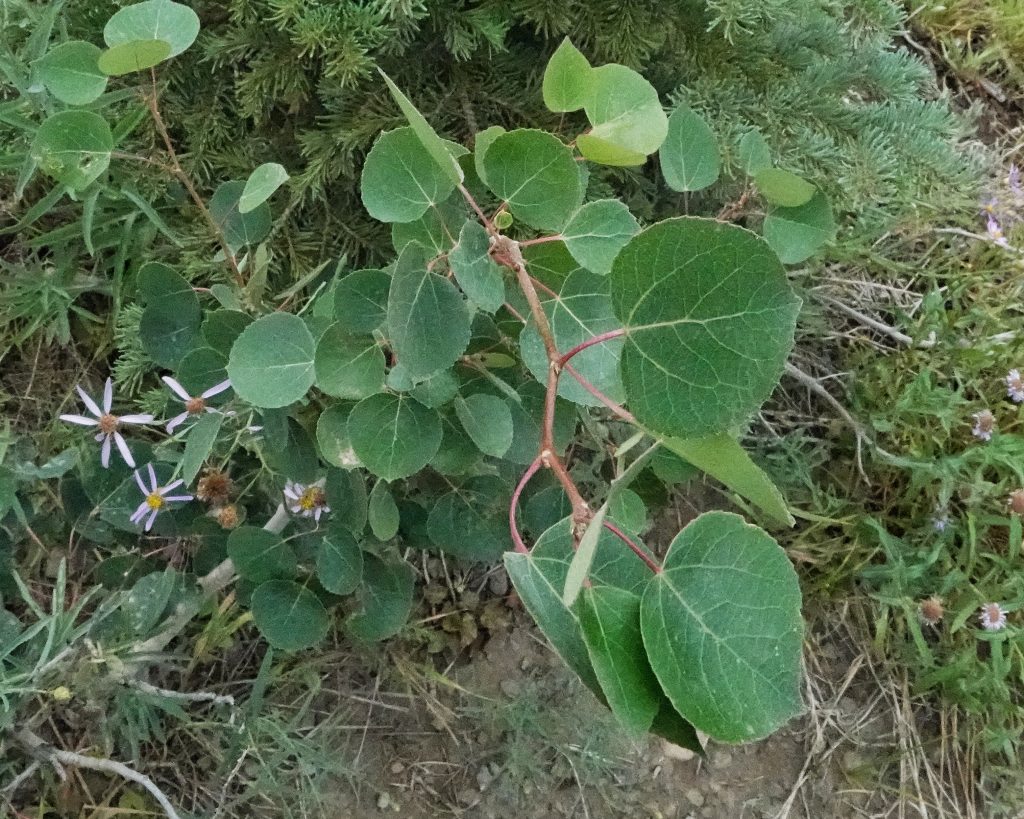
I was very surprised to encounter this small stand of quaking aspen (Populus tremuloides) on the south flank of Mt. Adams last Saturday, because I think of them as being found much further east. I was even more surprised to discover that they are found even further west than where I found these. I can honestly say I’ve never noticed one of these delightful members of the willow family (Salicaceae) in any of my ramblings west of the Cascades, and I wonder how many I have passed by unbeknownst to me.
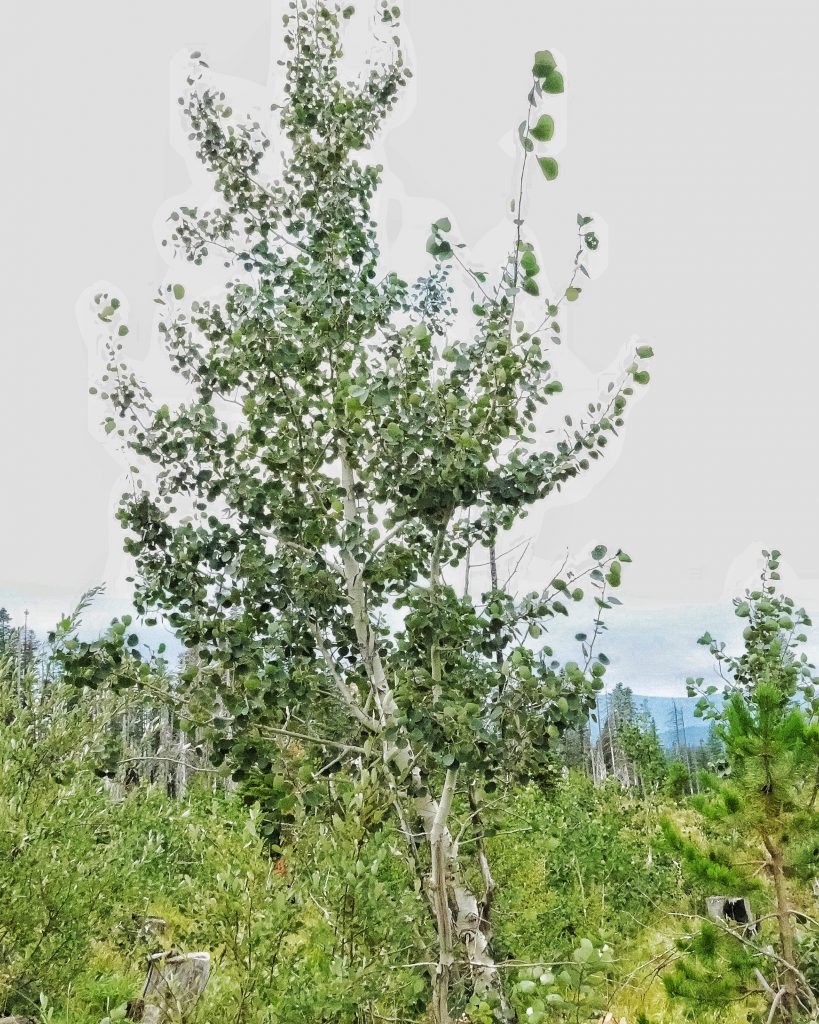
I have many fond memories of these trees from my mid-childhood in Montana, and even more vivid ones from a summer I spent in Jackson Hole, Wyoming in early adulthood, when I would daily wander amongst them along the Gros Ventres River, or the times I passed through a huge grove of them hiking over Blacktail Butte on my way to the bar in Moose, to drink Anchor Steam beer and watch the afternoon thundershowers assail the Tetons. Seeing the fluttering of their bicolored leaves in even the smallest breeze (the result of a laterally flattened leaf petiole, which actually gives it more shear strength in higher winds) was almost hallucinatory, and the million whispers of wind through those leaves was possibly the most soothing sound I’ve ever heard.
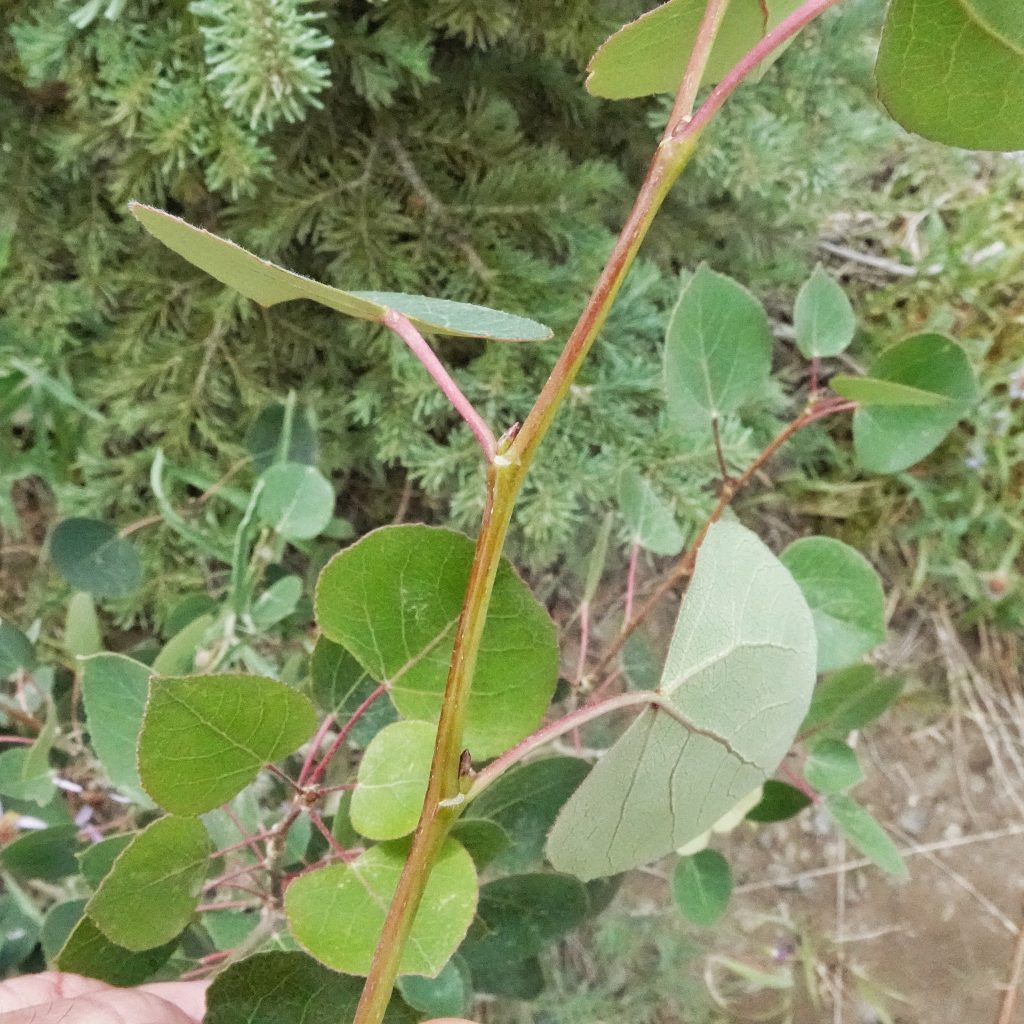
Even with so many things I already loved about quakies, I found an even greater appreciation of them once I discovered, during the researching of this profile, how incredibly important they are to the ecosystems they inhabit. The ‘eaten by’ category below could have easily been 3 times that long if I had included everything I found that eats quaking aspen. Seemingly even more so than the conifers, they are a foundational element of any ecosystem in which they are found. For a comprehensive overview of the ecology and biology of quaking aspen, see either Janet Howard’s excellent and comprehensive treatment at Populus tremuloides or that of D. A. Perala at Populus tremuloides Michx
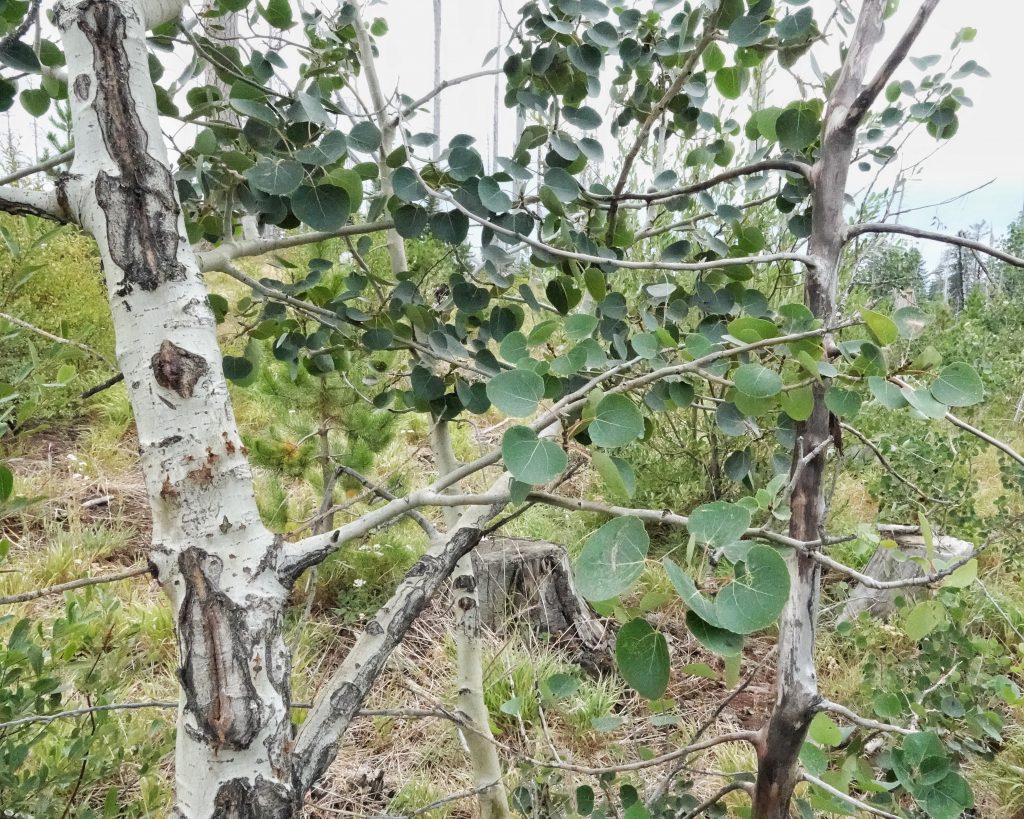
And even cooler yet is the fact that the largest living organism on earth is believed to be a 106 acre grove of quaking aspen in Utah, which the scientists studying it have named Pando, Latin for “I spread”. (The biggest living thing on Earth is being nibbled to death. Can it be saved?) Aspen are monoecious, which means they have either male or female flowers, so getting pollen and ovaries together doesn’t happen easily. But they have adapted by having roots that form adventitious buds on the parent root system (the ortet), and new plants that are clones of the ortet arise from those buds, although they compound the problem of fertilization by also being the same sex as the parent. But sexual reproduction has historically not been of importance to these trees, since even when the tiny (3 million per pound) seeds have been fertilized they are only viable for a short time, since they lack a protective covering. And though individual trees only live for about a hundred years, a grove of clones may well last for thousands of years. It is possible, and even likely, that all of the couple dozen quakies I found in that little patch on Mt. Adams are clones from one organism, whose rootstock survived the Cascade Creek fire during the fall of 2012.
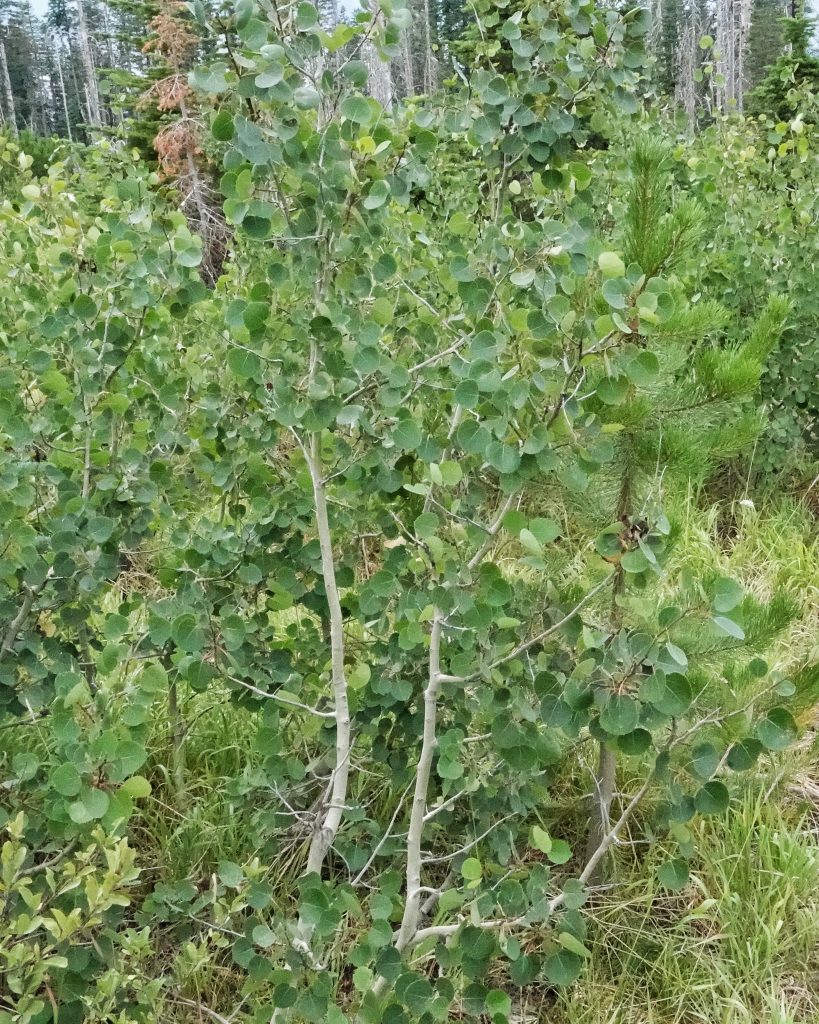
Ethnobotany– “Wood used to make dugout canoes…Decoction of branches used to wash traps, guns, buckskins and hunters. The decoction was used to wash humans such as hunters who desired to be exceptionally ‘clean.’…Decoction of branches or roots taken and used as a wash for syphilis…Decoction of leaves taken for urinary trouble…Decoction of stems and branches used as a wash for rheumatism…Decoction of branches taken by people suffering from insanity through excessive drinking…Decoction of stems and branches taken for dyspepsia…Decoction of bark rubbed on adolescents’ bodies for purification…Powdery substance from bark rubbed on girls’ armpits so that they would not grow underarm hair. The powder was rubbed on girls’ armpits after their first menstrual period. Young men, too, rubbed the powdery substance on their arms and faces to prevent the growth of hair…Wood ash mixed with water or grease and used as a salve on swellings.” For more information and a more complete list, see the 117 entries under Populus tremuloides on BRIT – Native American Ethnobotany Database
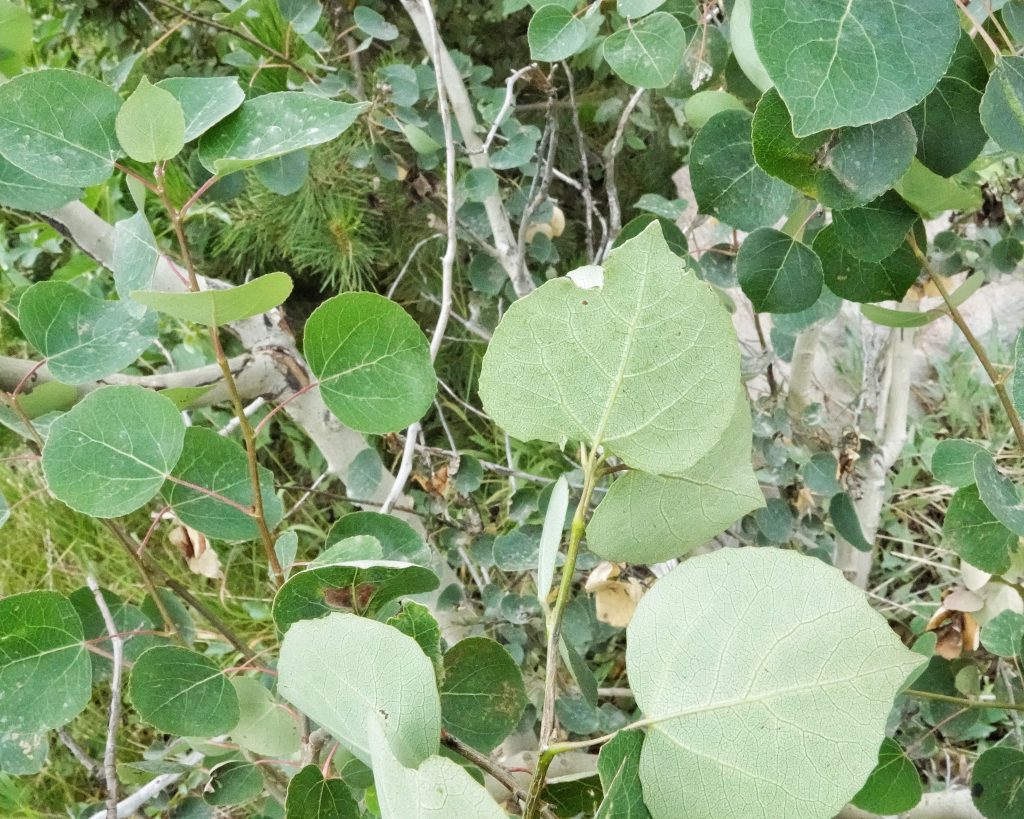
Description– “Colonial tree, dioecious, up to 15 m. tall, with smooth, greenish-white bark that becomes blackish and somewhat rough on very old trunks; bud scales shiny, but not resinous; Leaves: Leaves alternate, relatively small, on slender, laterally-flattened petioles half to fully as long as the blade; blades rotund-ovate to reniform-cordate, 2.5-9 cm. long and 2.5-8 cm. wide, shortly acuminate, paler beneath, the margins finely toothed and hairy, the surfaces glabrous at maturity; Flowers: Catkins drooping; the bracts subtending the flowers in the catkins persistent, deeply cleft into a few slender lobes with long, white hairs on the margins; staminate catkins elongating to 2-3 cm. then deciduous; stamens 6-14; pistillate catkins at maturity 4-10 cm. long, with numerous fruits; stigmas 2, each deeply cleft into 2 or more slender lobes; Fruits: Capsules lanceolate, 4-6 mm. long, on pedicles 1-2 mm. long.” Populus tremuloides – Burke Herbarium Image Collection
Similar species– Populus nigra and P. deltoides have triangular to Diamond shaped leaves; other Populus sp. have rounded leaf petioles; Birch trees have thin, peeling outer bark.
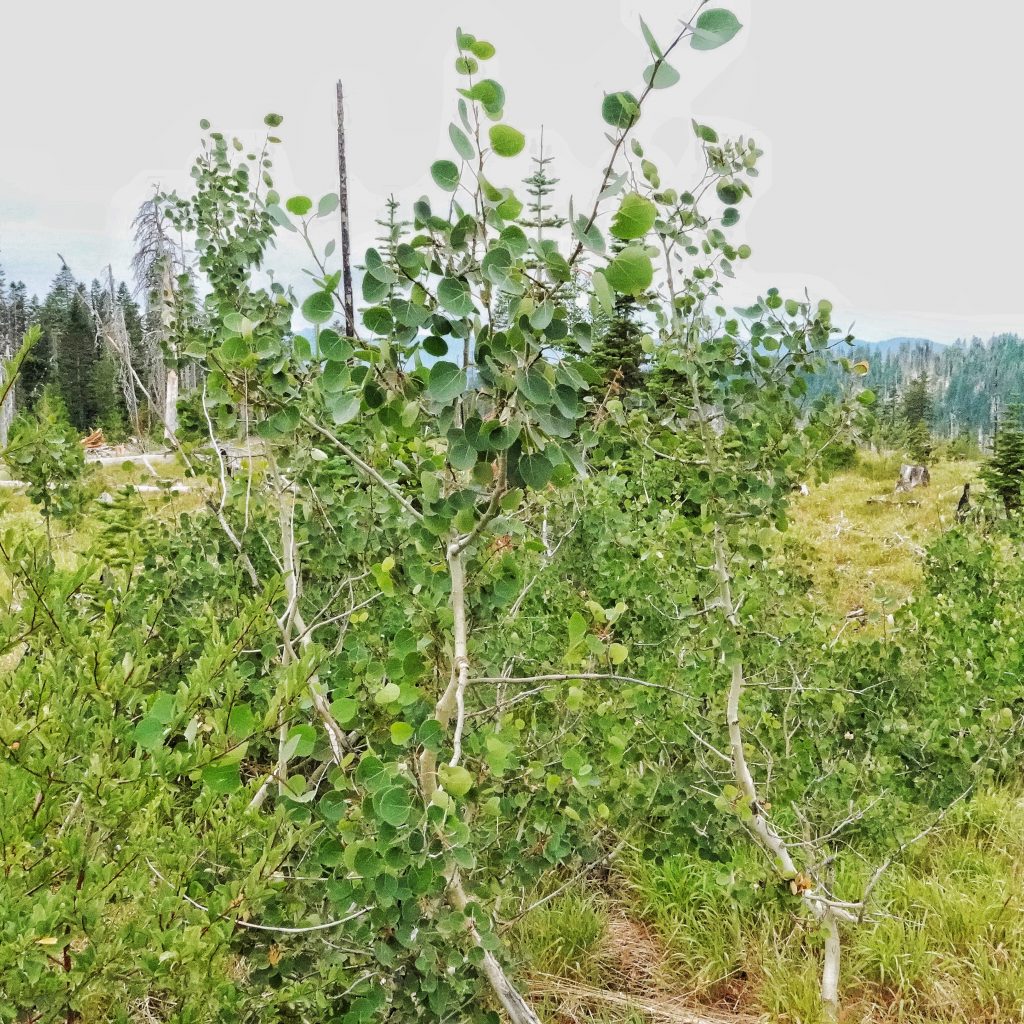
Habitat– “Quaking aspen occurs on a wide variety of sites [40,111]. It grows on moist upland woods, dry mountainsides, high plateaus, mesas, avalanche chutes, talus, parklands, gentle slopes near valley bottoms, alluvial terraces, and along watercourses [40,109,158,166]. Climate: Climatic conditions vary widely over the range of quaking aspen, especially minimum winter temperatures and annual precipitation. Generally, quaking aspen occurs where annual precipitation exceeds evapotranspiration…Soils: Quaking aspen grows on soils ranging from shallow and rocky to deep loamy sands and heavy clays. Good quaking aspen sites are usually well drained, loamy, and high in organic matter and nutrients [123]. Cryer and Murray [36] stated that stable quaking aspen stands are found on only one soil order – mollisols – and a few soil subgroups of which Agric Pachic Cryoborolls and Pachic Cryoborolls are dominant. The best stands in the Rocky Mountains and Great Basin are on soils derived from basic igneous rock such as basalt, and from neutral or calcareous shales and limestones.” FEIS entry for Populus tremuloides by Janet L. Howard; 1996
Range– North America, especially the northern part, though found at high elevations well into Mexico; in the PNW it is found primarily from the Cascades east to the Rockies, and in the Siskiyous and Klamath mountains, though there are scattered, disjunct populations on the we(s)t side.
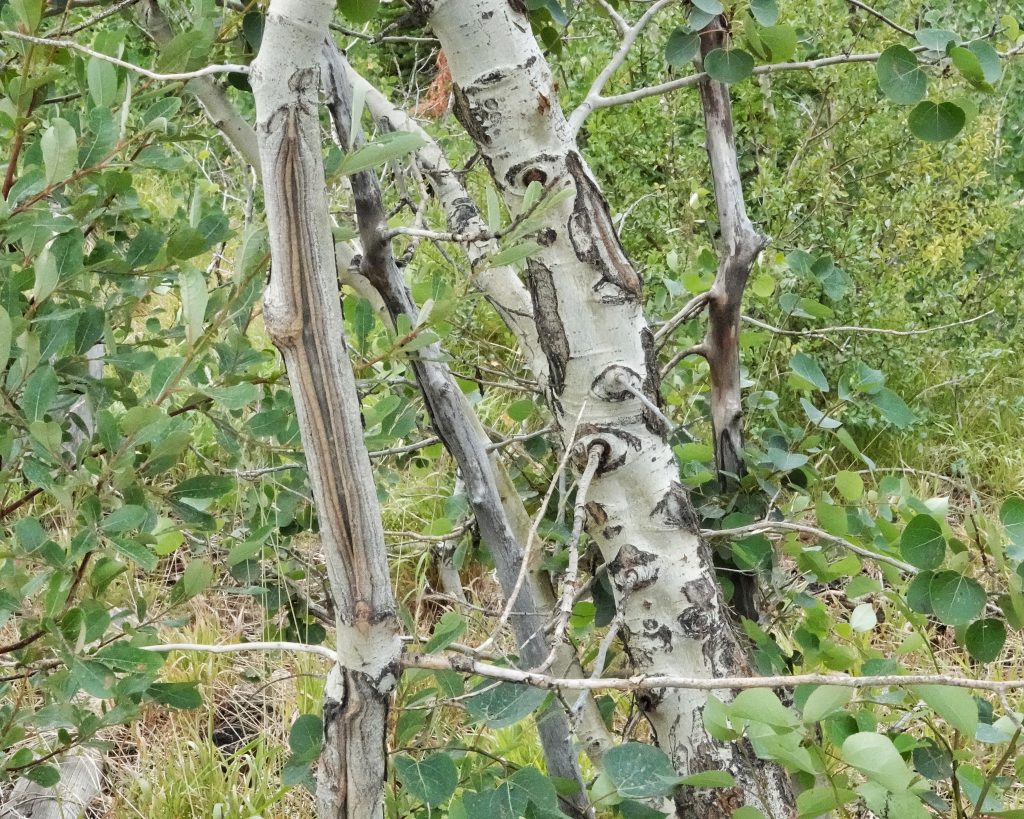
Eaten by– “Look for sap feeding butterflies and moths at sapsucker wounds on Quaking Aspen.Hostplant for Western Tiger Swallowtail, Viceroy, Lorquin’s Admiral and Weidemeyer’s Admiral, Mourning Cloak, Green Comma, Oreas Comma, and Dreamy Duskywing…Arctiidae: Garden Tiger Moth (Arctia caja). Fall Webworm (Hyphantria cunea). Yellow-spotted Tiger Moth (Lophocampa maculata). Yellow Woollybear (Spilosoma virginica); Coleophoridae: Cherry Casebearer (Coleophora pruniella); Cossidae: Locust Borer (Prionoxystus robiniae), Aspen Carpenterworm (Acossus populi). Drepanidae: Two-lined Hooktip (Drepana bilineata); Gelechiidae: Pale-headed Aspen Leafroller (Anacampsis niveopulvella). Geometridae: Fall Cankerworm (Alsophila pometaria). Common Gray (Anavitrinella pampinaria). Infant (Archiearis infans). Peppered Moth (Biston betularia)…Pale Beauty (Campaea perlata) (fq). Digrammia hebetata…Maple Spanworm (Ennomos magnaria). Autumnal Moth (Epirrita autumnata)…Northwest Phoenix (Eulithis xylina). Emasculated Grey (Iridopsis emasculatum)…Lobophora magnoliatoidata. Lobophora montanata. Powdered Bigwing (Lobophora nivigerata) (fq…. Bruce Spanworm (Operophtera bruceata)…;Gracillariidae: Willow Leafblotch Miner Moth (Micrurapteryx salicifoliella). Aspen Serpentine Leafminer (Phyllocnistis populiella)…; Lasiocampidae: Western Tent Caterpillar (Malacosoma californica), Forest Tent Caterpillar (Malacosoma disstria)…Lymantriidae: Variable Tussock Moth (Dasychira vagans ). White Satin (Leucoma salicis) (fq). European Gypsy Moth (Lymantria dispar). Antique Tussock Moth (Orgyia antiqua)…Noctuidae: Alder Dagger (Acronicta dactylina)…Gray Dagger (Acronicta grisea, Canada). Impressed Dagger (Acronicta impressa). Puta Sallow (Anathix puta). Cottonwood Dagger (Acronicta lepusculina).Acronicta rubricoma. Copper Underwing (Amphipyra pyramidoides)…Large Looper (Autographa ampla)…White Underwing (Catocala relicta) – Powell & Opler believe quaking aspen is its primary host in the West. Semirelict Underwing (Catocala semirelicta). Intermediate Cucullia (Cucullia intermedia). Pale Enargia (Enargia decolor).…Speckled Green Cutworm (Orthosia hibisci)…Grote’s Satyr (Ufeus satyricus)…Dot-and-Dash Swordgrass Moth (Xylena curvimacula)… Gray Furcula (Furcula cinerea). Zigzag Furcula (Furcula scolopendrina)…Rough Prominent (Nadata gibbosa). Red-washed Prominent (Oligocentria semirufescens). Black-rimmed Prominent (Pheosia rimosa). Red-humped Caterpillar (Schizura concinna). Morning-glory Prominent (Schizura ipomoeae). Unicorn Caterpillar (Schizura unicornis); Oecophoridae: Agonopterix argillacea (Canada). Depressariodes ciniflonella (Canada). Dull Flatbody Moth (Semioscopis inornata); Pyralidae: Lesser Aspen Webworm (Meroptera pravella); Saturniidae: Polyphemus Moth (Antheraea polyphemus). Pandora Pinemoth (Coloradia pandora). Western Sheepmoth (Hemileuca eglanterina). Nevada Buckmoth (Hemileuca nevadensis). Sesiidae: American Hornet Moth (Sesia tibiale) (fq); Sphingidae: Big Poplar Sphinx (Pachysphinx occidentalis). Blinded Sphinx (Paonias excaecata). Smerinthus ophthalmica…Great Ash Sphinx (Sphinx chersis); Thyatiridae: Tufted Thyatirid (Pseudothyatira cymatophoroides); Tortricidae: Acleris hastiana .Marbled Dog’s Tooth Tortrix (Acleris maccana). Acleris maximana. Acleris nigrolinea. Robinson’s Acleris (Acleris robinsoniana). Acleris senescens. Yellow Birch Leaffolder Moth (Ancylis discigerana). Allen’s Tortrix (Aphelia alleniana).” https://www.cnps-scv.org/images/handouts/CaliforniaPlantsforLepidoptera2014.pdf; a partial list from Charley Eiseman’s “Leaf miners of North America”, 2nd edition; leaf mining moths- Ectoedemia populella, Ectoedemia argyropeza, Phyllocnistis populiella, Caloptilia stigmatella, Phyllonorycter apparella, Gypsonoma haimbachiana; leaf mining beetles- Zeugophora abnormis, Zeugophora californica, Zeugophora scutellaris; leaf mining flies- Agromyza albitarsis, Agromyza isolata; sawfly- Fenusella populifoliella; a partial list of leaf beetles found on this tree-Altica bimarginata Say, A. subplicata LeConte, Anomoea laticlavia (Forster), Calligrapha multipunctata (Say), Chrysomela aeneicollis (Schaeffer), C. crotchi Brown, C. falsa Brown, C. knabi Brown, C. laurentia Brown, C. lineatopunctata Forster, C. scripta Fabricius, C. walshi Brown, Crepidodera decora Parry, C. dignaParry, C. heikertingeri (Lazorko), C. populivora Parry, C. solita Parry, C. spenceri (Lazorko), Disonycha alternata (Illiger)- https://www.zin.ru/animalia/coleoptera/pdf/clark_ledoux_et_al_2004.pdf; “For deer, elk and moose Quaking Aspen is an important browse. Rabbits, rodents, porcupines, and beaver all eat the bark and other parts of aspen trees. They often can girdle and kill small trees. Beavers use it for making their lodges and can kill and remove 200 stems a year as far as 400 feet from a waterway! Quaking Aspen also provides important feeding and nesting sites for many birds. It is host to several insect species that are food for woodpeckers.” Quaking Aspen, Populus tremuloides | Native Plants PNW
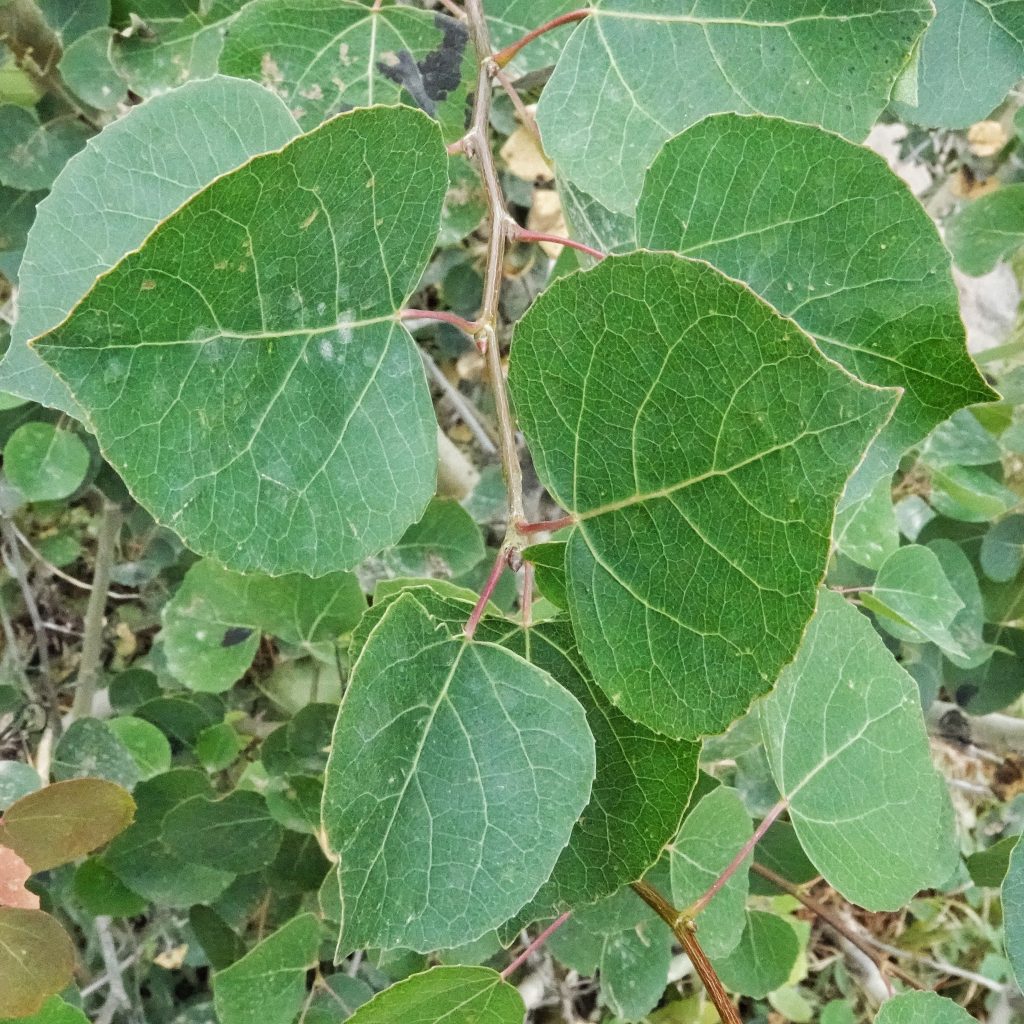
Reproductive timing– Flowers April through June, depending on latitude and elevation
Etymology of names– Populus is from the Latin word for ‘people’, and is a classical Latin name for the poplars. The specific epithet tremuloides is from the Latin word for ‘trembling/quaking’ with the suffix of ‘like’, to denote that it also trembles like the European aspen Populus tremula.
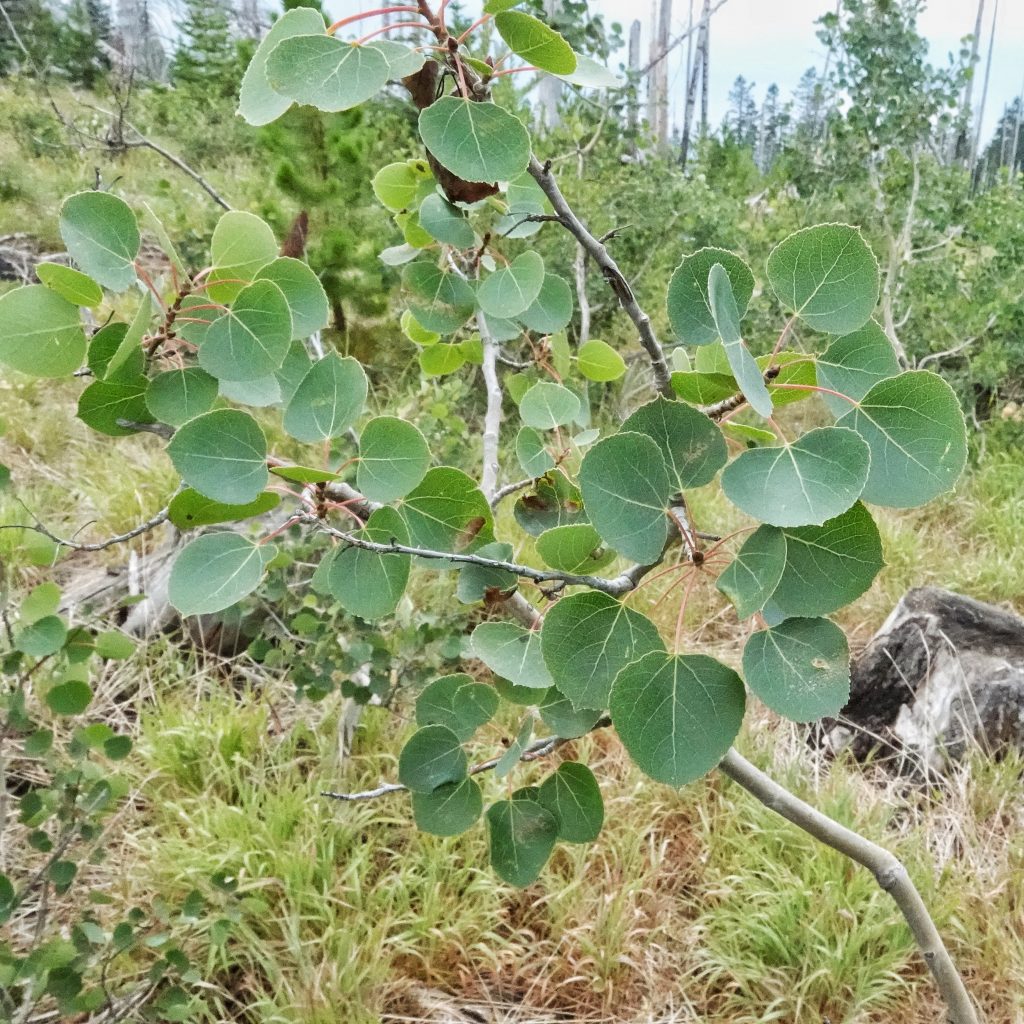
Quaking Aspen – Bryce Canyon National Park (U.S. National Park Service)
BRIT – Native American Ethnobotany Database
Quaking Aspen, Populus tremuloides | Native Plants PNW
Quaking Aspen (Populus tremuloides)
Fishlake National Forest – Home
Aspen Tree or Quaking Aspen? How This Special Tree Got Its Name (Full Guide)
https://en.wikipedia.org/wiki/Populus_tremuloides
OregonFlora Populus tremuloides
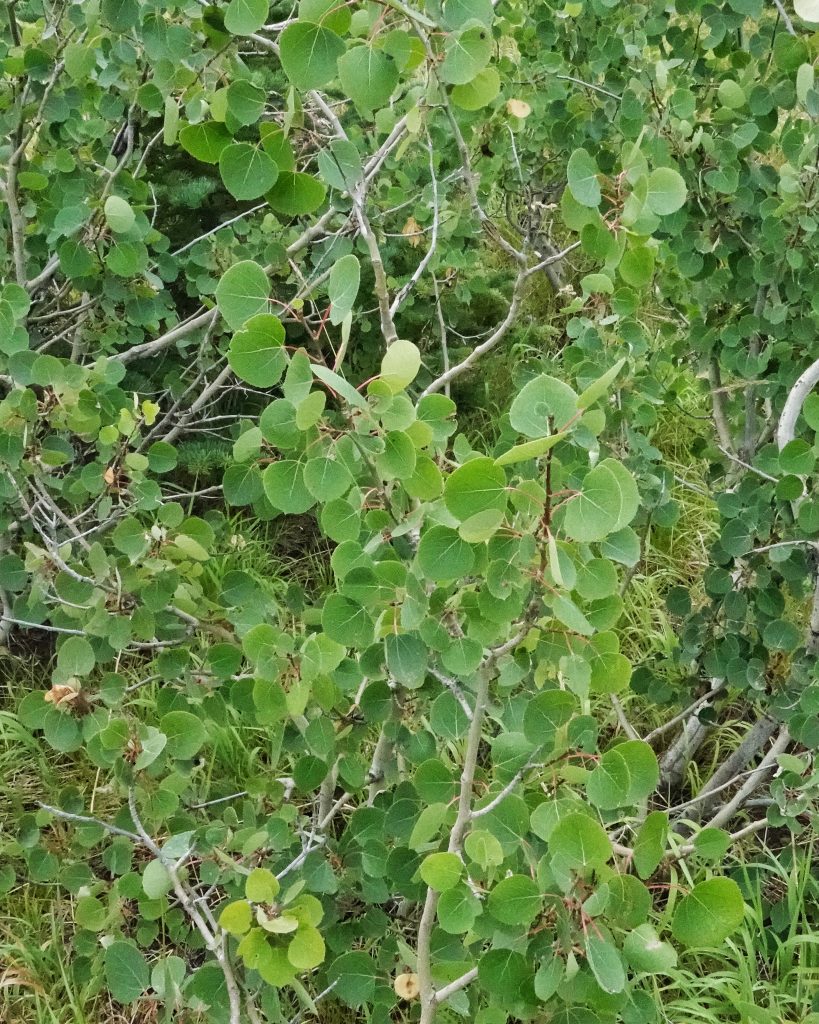
I found two 4ft. 5gal. Trees at soggy bottom nursery and planted them in my yard…poor soil….Warm Beach Wa… Two months ago…they appear to be doing well….
Planted one in my yard in Seattle.(Eastlake neighborhood) It is thriving, but after about ten years shoots are sprouting up everywhere. Possibly a big mistake to alow it into a small yard. But it is beautiful.
The clones are coming to get you 😀
A very snide, rude, ignoramus (who knew everything horticultural because her husband once had a blueberry farm) told me I could not grow these in my yard–so I planted some! I no longer live in that house, but the stand of aspen are thriving.
I planted aspen at my “new” house first thing and they are so tall and beautiful.
Plant ’em if you got ’em, I say!
I love that, Kat!